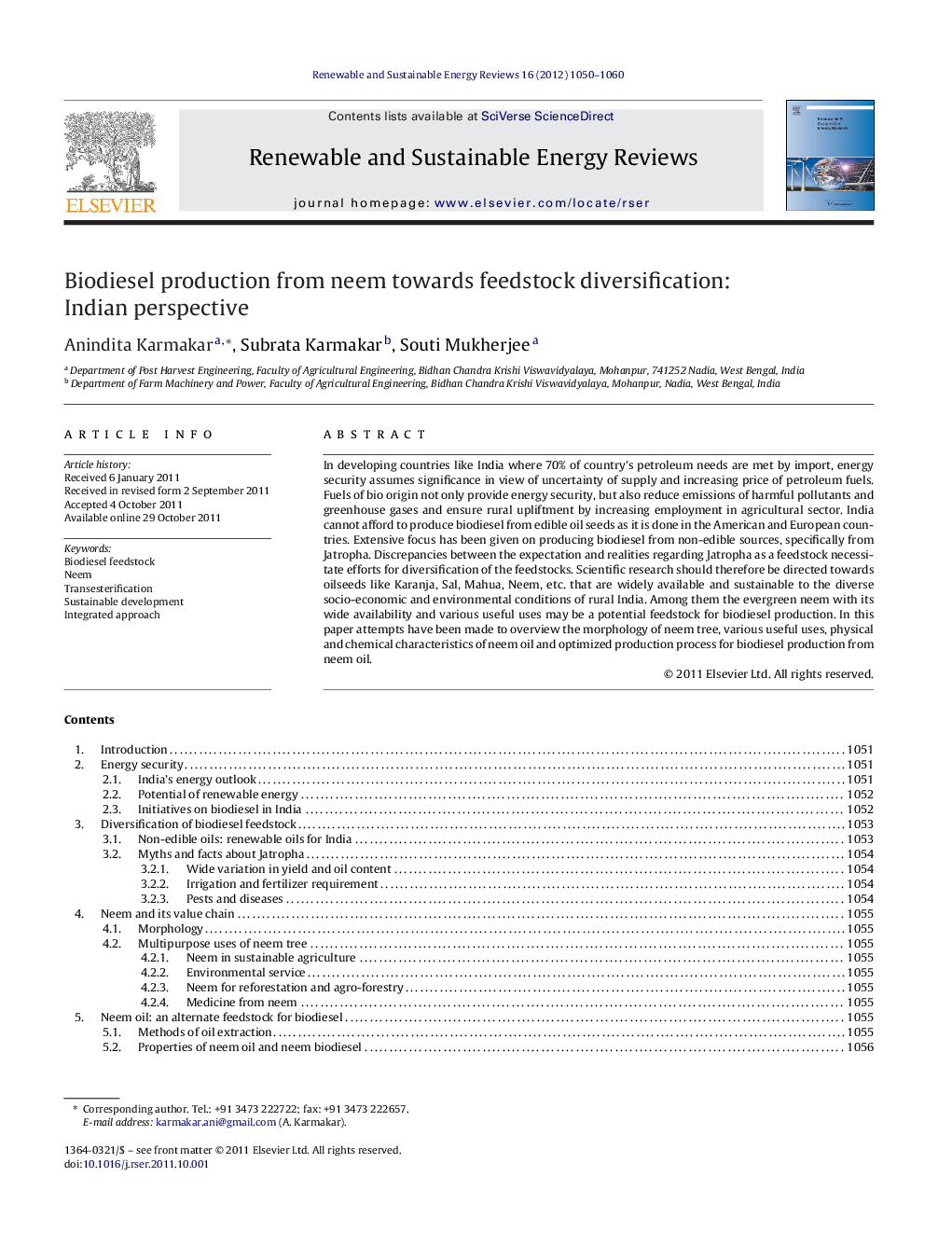| Article ID | Journal | Published Year | Pages | File Type |
|---|---|---|---|---|
| 1751324 | Renewable and Sustainable Energy Reviews | 2012 | 11 Pages |
In developing countries like India where 70% of country's petroleum needs are met by import, energy security assumes significance in view of uncertainty of supply and increasing price of petroleum fuels. Fuels of bio origin not only provide energy security, but also reduce emissions of harmful pollutants and greenhouse gases and ensure rural upliftment by increasing employment in agricultural sector. India cannot afford to produce biodiesel from edible oil seeds as it is done in the American and European countries. Extensive focus has been given on producing biodiesel from non-edible sources, specifically from Jatropha. Discrepancies between the expectation and realities regarding Jatropha as a feedstock necessitate efforts for diversification of the feedstocks. Scientific research should therefore be directed towards oilseeds like Karanja, Sal, Mahua, Neem, etc. that are widely available and sustainable to the diverse socio-economic and environmental conditions of rural India. Among them the evergreen neem with its wide availability and various useful uses may be a potential feedstock for biodiesel production. In this paper attempts have been made to overview the morphology of neem tree, various useful uses, physical and chemical characteristics of neem oil and optimized production process for biodiesel production from neem oil.
